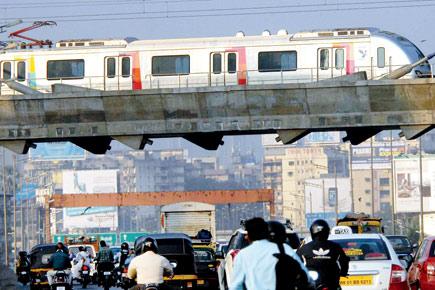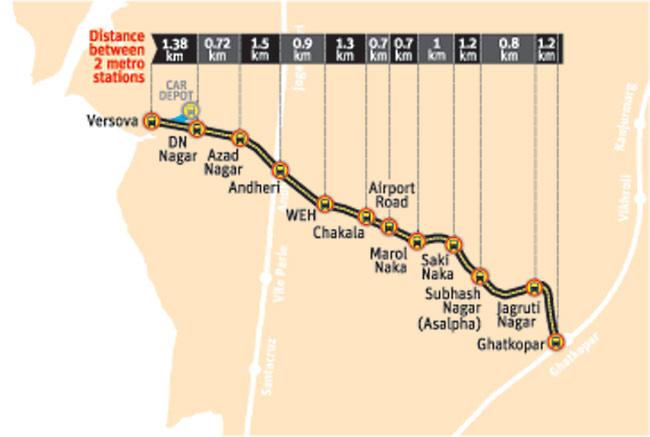Railways reject Mumbai Metro One claim that new trains will run at 90 kmph, say Indian tracks won't be able to handle such speed. Journey to now take at least 7 minutes more than expected

It may look as swanky as the London underground and claim to be better than its Delhi counterpart, but the Mumbai metro won’t run any faster than 50 kilometres per hour. While travelling by Metro might still be a more convenient way for Mumbaiites to reach their destination — it won’t necessarily always be the fastest.

Not up to the mark: Authorities say Indian tracks not geared to tackle European level of speed. File pic
With the Versova-Andheri-Ghatkopar (VAG) route of the metro set to open soon, it has now emerged that there is a clear difference of opinion between the railway authorities and metro rail officials over the quality of tracks and the speed of the trains.
The crux of the matter
Recently the Research, Design and Standards Organisation (RDSO) of the Indian Railways inspected the Mumbai Metro tracks for several technical parametres. This is the same agency that sets standards and approves the quality of tracks, platform heights and even the kind of rakes that are to ply on the tracks. While the Mumbai Metro One Private Ltd (MMOPL), had said 90kmph would be the maximum speed for their metro trains, the RDSO has given permission for a maximum speed of only 50kmph for these trains. “We have permitted speeds of 50kmph for the time being,” said a RDSO official.
Sources said the organisation would monitor metro service for at least three months from the day it begins operations, before sanctioning a higher speed.
No speeding
The reason for curtailing the speed is due to the steel tracks and supporting infrastructure that have been constructed. “These tracks have been constructed based on European standards but we follow Indian Railway standards. The two have differences on several technical parameters, including the tolerance limit of tracks and even curves,” said a railway official.
Sources said that the tracks have been manufactured following the European norms, which is said to follow higher standards. While certifying the Metro rail, the officials are bit unsure whether these European Standards would actually be workable in Indian conditions.
Other side
A Mumbai Metro One spokesperson says, “RDSO is an Indian Railway organisation, which is familiar with our domestic standards and codes. Since MMOPL has constructed the tracks following global standards, therefore, RDSO is taking little more time in examining the same.”
A let down
According to metro rail officials, the difference of 40kmph on this 11-km route would make a huge difference to commuters. At 50kmph, commuters would lose a good seven minutes each way. The average distance between two Metro stations is just about 800meters to 1 km — another reason why the trains may not be able to pick up speed to the extent of 90kmph.
ADVERTISEMENT
90kmph
Maximum speed for metro trains promised by Mumbai Metro One Private Ltd
100kmph
Maximum speed at which trains can ply on European standard tracks
 Subscribe today by clicking the link and stay updated with the latest news!" Click here!
Subscribe today by clicking the link and stay updated with the latest news!" Click here!







